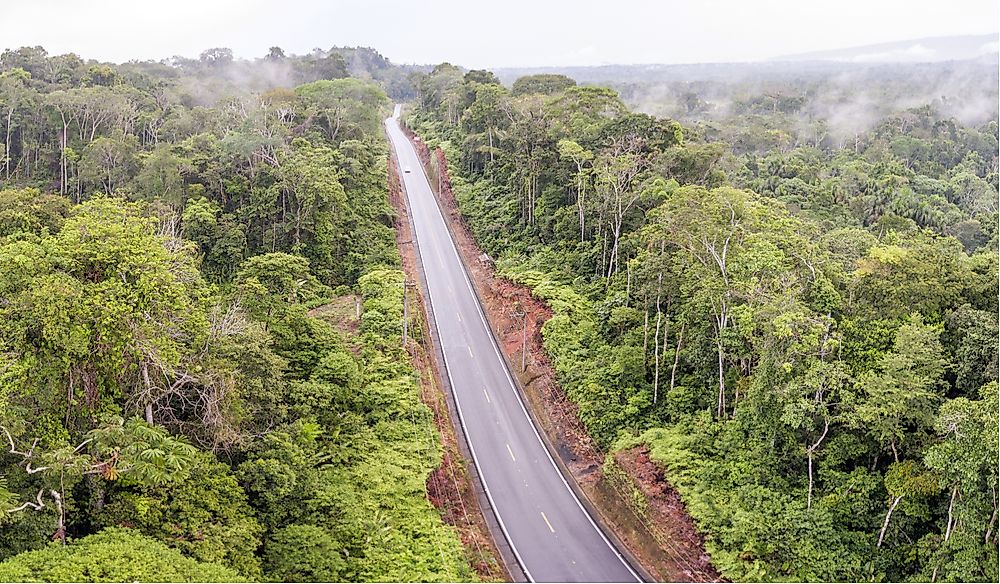What Are The Impacts Of Infrastructural Developments On The Environment?

Infrastructure refers to physical structures that are built to provide certain conveniences to the modern human society. Roads, railways, airports, dams, offshore oil platforms for oil drilling, etc., are all examples of infrastructural facilities. Most of the time, infrastructural developments come at the cost of the environment. The well being of other species is sacrificed to make human lives more comfortable. Here are some of the ways in which infrastructural developments such as dams, roads, railways, water channels, and natural resource extraction damage the environment.
How Do Dams Affect the Environment?
Most of us are aware of the fact that dams cause great damage to the environment. It not only displaces the human population living at the site where the dam is built but also completely destroys the ecological balance of the place. Dams are usually built for the supply of hydroelectric power, controlling floods downstream of the river and/or for storing water in reservoirs for agricultural purposes. Although these are great advantages, they come at a heavy cost.
Flooding caused during dam construction kills wildlife and displaces people.
During the construction of a dam, large areas surrounding it get flooded permanently. Wildlife living in such areas is thus completely eliminated. If the region hosted threatened species, it can even lead to the extinction of the same.
Downstream ecosystems may experience drought.
Alteration of the natural course of a river by constructing a dam affects the ecosystems supported by the river. By diverting large volumes of water elsewhere, freshwater ecosystems downstream may dry up due to insufficient volumes of water reaching them.
Dams can lead to the retreat of deltas.
As a dam blocks a river’s flow, the river carries a lower volume of sediments downstream than what it carried in the absence of the dam. Thus, a delta at the mouth of the river might retreat due to the low deposition of sediments.
Dams hinder the migration of fish.
Certain species of fish migrate from the sea to the river for spawning. The life cycle of such species and their future survival is thus put at risk due to the creation of dams.
How Do Roads and Railways Affect the Environment?
Roads and railways are important means of communication that are necessary for the overall development of a locality or a country. Without road and rail, people living in remote areas would never get access to the privileges of modern day life. Also, such infrastructure opens up various avenues of income such as income obtained from tourism, forestry, mining, etc. However, unfortunately, this boon to humans becomes a bane to all other creatures of nature.
Vegetation is cleared to make roads and railways.
The construction of roads and railways necessitates the cutting down and clearing of vegetation over long distances. Thus, the green cover in such areas is lost. Deforestation has a wide range of environmental impacts such as habitat loss and soil erosion among others.
Roads and railways affect the migration of wild animals.
Often, when environmental norms are not followed, such infrastructural facilities cut off vital wildlife corridors. Migration is an essential part of the life of many species who migrate from one place to another in search of food, water, and mate. However, when roads or railways pass through the migratory corridors of wildlife, it creates great distress for these animals as they are now unable to safely migrate.
Wildlife gets killed due to accidents.
What is more tragic is that many of these animals also die in road and rail accidents while attempting to move between their habitats. For example, in the wildlife belt of India’s Dooars region, elephants often die due to rail accidents as the railway line in the region passes through important elephant corridor.
Noise pollution disturbs wildlife.
The noise created by vehicles and trains passing through also disturb the wild animals and tend to disorient them. The predator-prey relationships are often harmed due to such noise pollution.
Wildlife becomes vulnerable to hunting and logging.
Roads and railway facilities also make forest areas accessible to all. Illegal loggers and hunters often grab this opportunity to cut down forests and hunt the wildlife for economic gains. For example, roads in the Congo Basin have encouraged the bushmeat trade in the region that has further risked the lives of its wildlife including gorillas and elephants.
How Do Facilities to Extract Natural Resources Affect the Environment?
We humans have always tried to use natural resources for our own benefit. Coal, oil, natural gas, minerals, etc., are extracted and put to a variety of uses that make our lives comfortable and secure. Whenever such a new source is located in an area, infrastructural facilities are built there. Roads, railways, transmission lines, offshore oil platforms, etc., are some of the infrastructural facilities that are built to extract the resources at their source location. Often areas have been deforested, wildlife has been wiped out, the environment has been polluted, and nature has been destroyed to extract such resources.
How Do Water Transfer and Channelisation Affect the Environment?
Whenever nature is altered by us, it is for our own benefit. However, most often, such benefits turn into problems in the long run. Engineering projects to divert the waters of rivers to the agricultural fields is one such activity that is associated with immediate benefits but is harmful in the long run to both the environment and the future generations. Water diversion leaves the river basin highly vulnerable to drought. It destroys wetlands downstream of the river due to the insufficiency of water.
Conservation
In the above-mentioned ways, infrastructural developments can be extremely detrimental to the environment around us. It is thus very important for the policy-makers to ponder on the future well-being of humans and wildlife. There is a need to carefully design infrastructure development projects to ensure they cause minimum harm to the environment.











